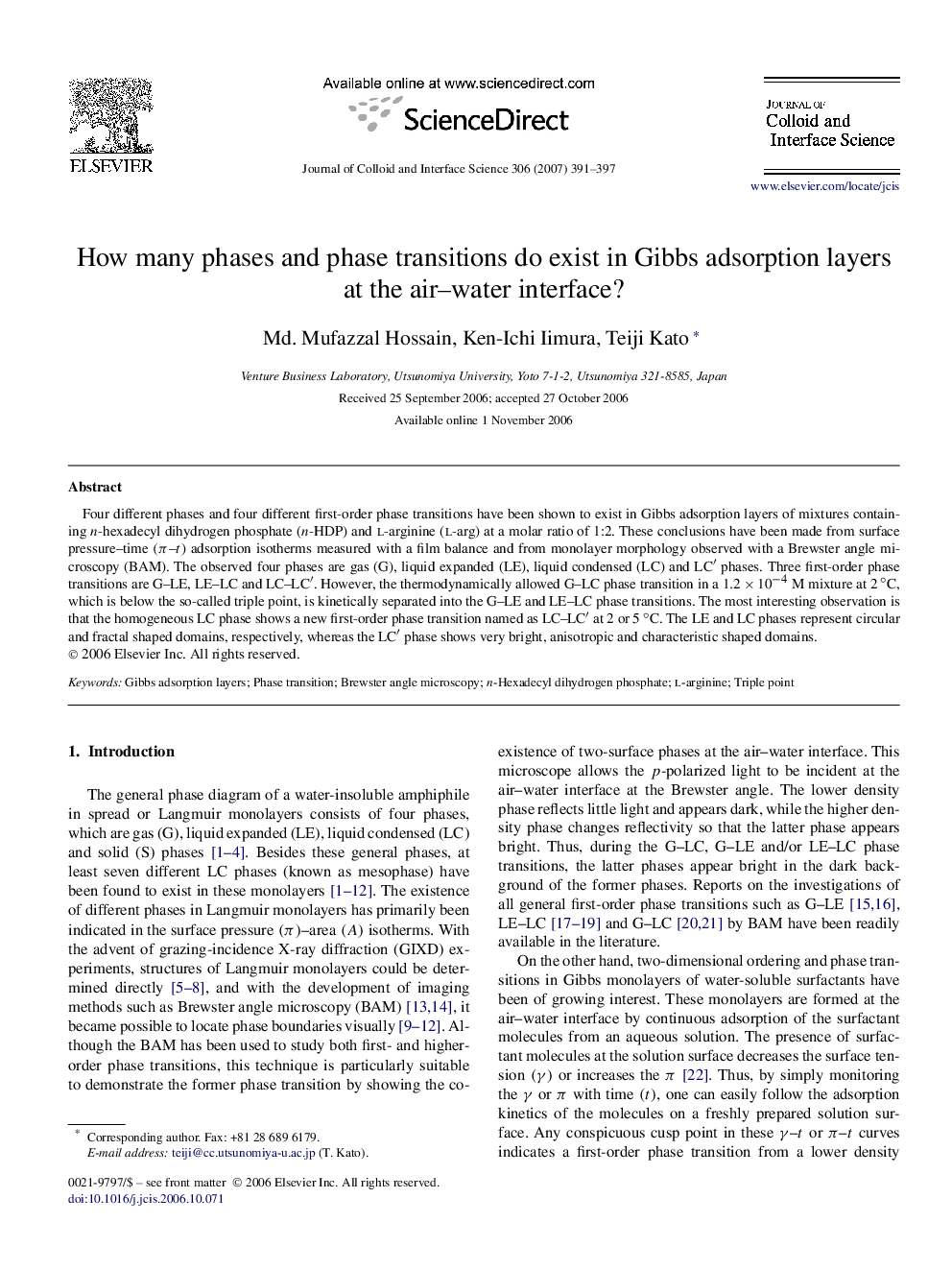| Article ID | Journal | Published Year | Pages | File Type |
|---|---|---|---|---|
| 612772 | Journal of Colloid and Interface Science | 2007 | 7 Pages |
Four different phases and four different first-order phase transitions have been shown to exist in Gibbs adsorption layers of mixtures containing n-hexadecyl dihydrogen phosphate (n-HDP) and l-arginine (l-arg) at a molar ratio of 1:2. These conclusions have been made from surface pressure–time (π–t)(π–t) adsorption isotherms measured with a film balance and from monolayer morphology observed with a Brewster angle microscopy (BAM). The observed four phases are gas (G), liquid expanded (LE), liquid condensed (LC) and LC′LC′ phases. Three first-order phase transitions are G–LE, LE–LC and LC–LC′LC–LC′. However, the thermodynamically allowed G–LC phase transition in a 1.2×10−4M mixture at 2 °C, which is below the so-called triple point, is kinetically separated into the G–LE and LE–LC phase transitions. The most interesting observation is that the homogeneous LC phase shows a new first-order phase transition named as LC–LC′LC–LC′ at 2 or 5 °C. The LE and LC phases represent circular and fractal shaped domains, respectively, whereas the LC′LC′ phase shows very bright, anisotropic and characteristic shaped domains.
Graphical abstractDifferent phase transitions observed in Gibbs adsorption layers at 2 °C.Figure optionsDownload full-size imageDownload as PowerPoint slide
